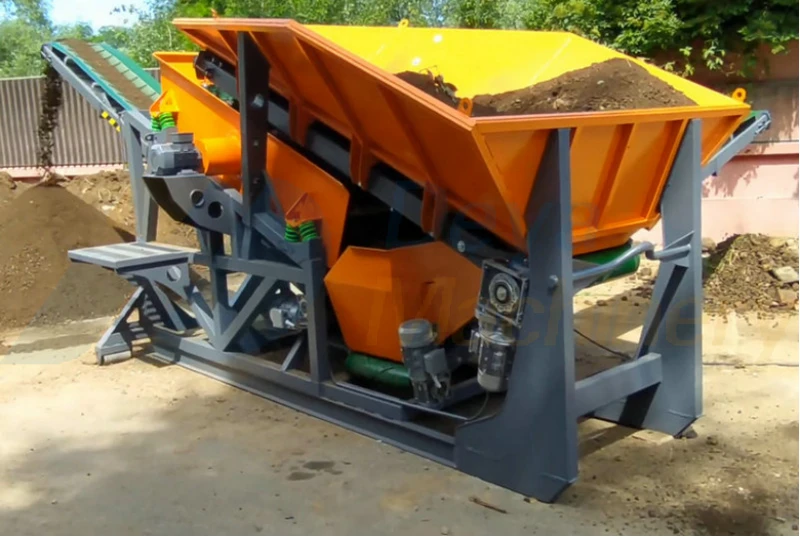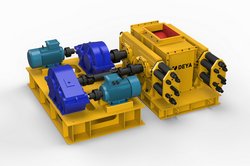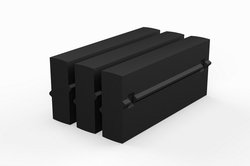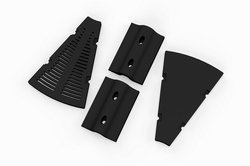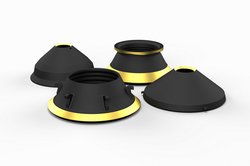Portable screener for materials separation
Introduction
A portable screener, also known as a portable screening plant or portable vibrating screen, is a mobile equipment used in various industries to separate and classify materials.
The equipment is designed to be easily transported and set up at different working sites, providing flexibility and efficiency in screening operations.
In river sand gravel separation applications, it is ideal equipment for processing capacity less than 100 tons per hour.
Working principle
Raw materials are loaded to the hopper by excavator or wheel loader. If it is river sand and gravels, the large rocks should be separated before loading, because it will have great impact with the top screen mesh, which reduces the service life.
At the bottom of the loading hopper, there is a belt conveyor for feeding, frequency inverter control panel can control the feeding speed.
When materials are sent to the vibrating screen, which is normally installed with an angle 12 to 22 degrees, separation starts.
During the vibrating process, the large size of material will stay on the top while the small and fine size material pass the screen mesh to the bottom to get different sizes of materials.
Each layer of the screen mesh comes to a collection hopper to different belt conveyors. Thus the materials is separated to different groups.
Main features of the portable screener as follows
Mobility
Portable screeners are designed to be easily moved from one location to another. They are typically mounted on wheels or skids, allowing for quick transportation using trucks or trailers.
This mobility enables screening operations to be conducted at multiple sites, reducing the need for material transportation.
Attached a 3D photo of the portable screener designed by Deya Machinery technical team, it is easy to move in the working site. There are small solid wheels at front, and tow part at back of the screener.
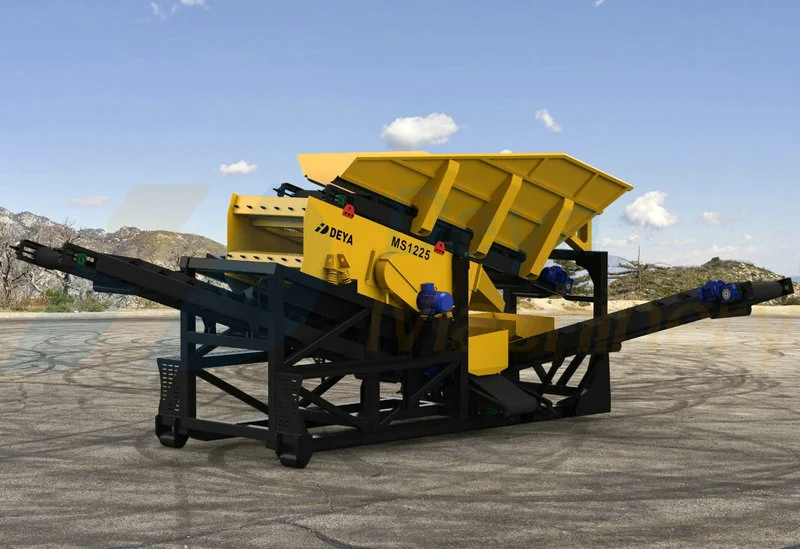
Size and Capacity
Portable screeners come in different sizes and capacities to accommodate various screening requirements.
The size of the screening deck or mesh determines the amount of material that can be processed at a time.
Consider the expected feed rate and the desired screening efficiency when selecting a portable screener with an appropriate capacity.
Base on sand and gravel separation, a 2 layer portable screener 1200x2400 can process 30 to 50 tons per hour. It is very efficient.
Screening Deck
The screening deck is the surface where the material is separated based on size. It is usually made of wire mesh or perforated plates with specific opening sizes. Typical size like 1/4’’, 3/8’’, 3/4’’.
Different deck configurations, such as a single deck, double decks, or triple decks, offer varying levels of screening options and versatility.
For portable screener, normally it has two layers, more than 2 layers need more conveyors, which is not easy to attach to the main frame.
Vibrating mechanism
Portable screeners incorporate a vibrating mechanism that causes the deck to vibrate, facilitating the separation of materials.
The vibration can be generated by eccentric weights, vibration motors, or hydraulic systems, depending on the design of the screener.
Adjustable vibration intensity and frequency help optimize the screening process for different types of materials.
For the portable screener designed and supplied by Deya Machinery, typically drive by two vibration motors or eccentric shaft weights.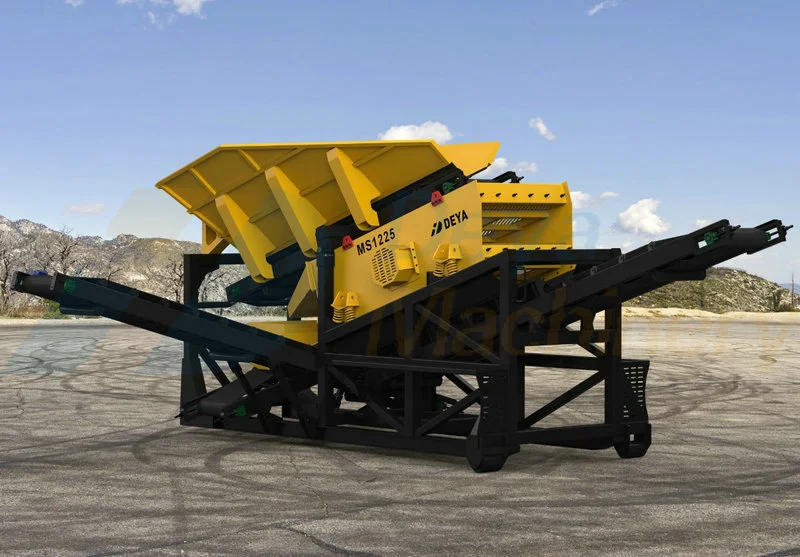
Screening Applications
Portable screeners are used in a wide range of industries and applications. They are commonly used in construction, mining, aggregate production, recycling, and landscaping.
Portable screeners can efficiently separate and classify materials such as gravel, sand, topsoil, compost, demolition waste, and more.
Configurable Options
Portable screeners often offer configurable options to meet specific requirements. These options may include adjustable screening angles, variable speed controls, and different mesh or plate options for various material types.
Some screeners may also have additional features like a remote control, water spray system for dust suppression, or a conveyor for stockpiling screened material.
Setup and Operation
Portable screeners are designed for ease of setup and operation. Almost no installation, just unfold the conveyors, and connects to power, it starts to work.
Quick setup features, such as hydraulic leveling legs or folding conveyors, can further streamline the deployment process.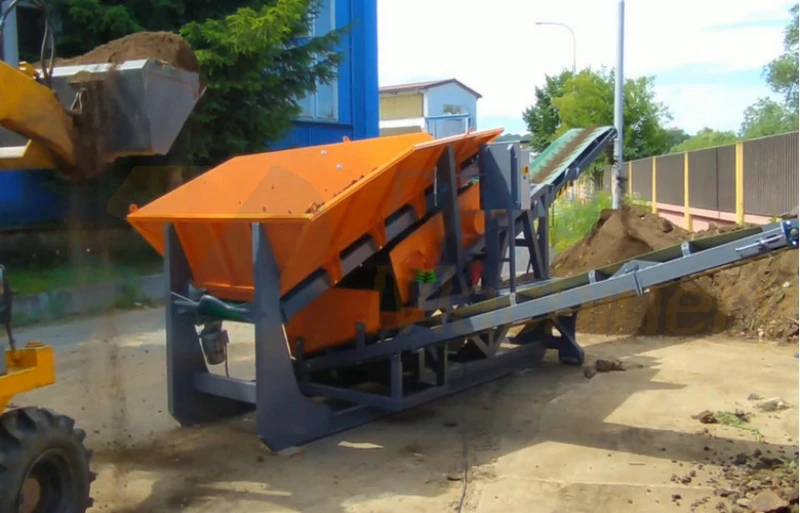
Maintenance and Service
Portable screeners require regular maintenance to ensure optimal performance. Check Deya Machinery’s operation manual first before operation.
Daily inspection, weekly inspection and monthly inspection is an important part to prolong the equipment service.
Lubrication, and inspection of wear parts are always important as well. Make sure there is enough grease for the bearings per shift. Check the mesh tension per shift.
Power Source
Diesel generator set is available to power the complete portable screening plant, in many remote area, it is not easy to get electricity, diesel generator set is a good option.
Electrical wires from control panel to motors will be supplied and installed on the equipment before equipment leave Deya Machinery’s workshop.
When selecting a portable screener, consider factors such as the required screening capacity, the type and size of materials to be screened, the mobility requirements, and any specific features needed for your application.
It's advisable to consult our team first based on your requirements for the capacity, screen size, also type of materials.